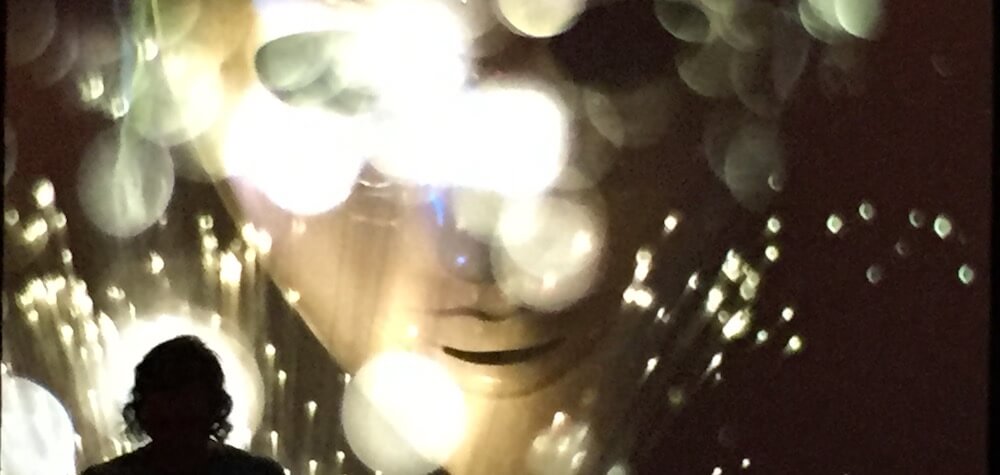
This April Spectacle is pleased to welcome Eric Pitra and Haoyan of America for a live score event like no other.
FRIDAY, APRIL 13 – 8 PM
ONLINE TICKETS HERE
(This event is $10.)

(This event is $10.)

Ismaïl Bahri lives and works in Paris. His work incorporates many cultural and aesthetic references, developing visual experiments that are both sensitive and precise. The results of these experiments take varying forms – drawings, videos, photographs, installations, and hybrids of these forms. The basic materials used in these works are manipulated and ultimately transformed, often through mechanically inspired gestures and procedures that are related, in one way or another, to cinema or photography.
Andrew Norman Wilson is an artist and curator based in Los Angeles whose videos and installations address a heady rush of images, technology, and bodies caught in the streams of circulation and representation that our era demands.
Alexandra Tatarsky makes performances in the unfortunate in-between zone of comedy, performance art, dance and deluded rant. Often there are songs. Her pieces Americana Psychobabble and Beast of Festive Skin have been described as “Brecht… with a buttplug” and “like someone took acid with too much speed in it.” Her latest experiment in the abyss entitled SIGN FELT! (a show about nothingness) is an improvisational bildungsroman for an idiot and will be at La Mama on April 24th. Please come. Writings on the shanzhai lyric, anti-capitalist miming, kabala and kaka are forthcoming in the magazines ArtReview Asia, Garlands, and Emerald Tablet. This is her first attempt at making a movie. Thank u for watching.
Guy Pettit is the founder and director of Flying Object and, more recently, Sophie Embassy (available.rest). He lives in Brooklyn, NY.
Joseph Rosen is a multimedia artist based in Brooklyn, New York. His creative focus is centered on analog methods of capturing and processing video.
Logan Chappe attempts to maintain a writing and video-based art practice while living in Manhattan. He is an MFA Candidate at The City College of New York (CUNY).
Meghan Surges is a multimedia artist. Born in 1995, Meghan grew up in Oconomowoc, WI, Cleveland, OH, and Portland, ME. She studied at Kenyon college and graduated in 2017 with a degree in Art and English. She now lives in Brooklyn and works as an art consultant.
Michelle Huynh Chu is an artist based in New York. Her work has been shown at Anthology Film Archives, LACDA, Songs for Presidents, Kilroy Metal Ceiling, and on cable television in France and Germany.
Rachel Haberstroh is an artist and writer based in NYC. She is one half of Wavy Dash, a co-founder of Millennial Focus Group, a member of Crit Club, and a 2018 resident at Outpost Artist Resources. Her work has been shown at Flux Factory, the Wassaic Project, Babycastles, Knockdowna Center and Small Editions.
Sara O’Brien is a writer and researcher who also works visually from time to time. She is based in Brooklyn, NY.
Nicole Wallace is a poet, student of Anishinaabemowin, and Managing Director of The Poetry Project. She is currently at work on a chapbook manuscript, WAASAMOWIN. Originally from Gakaabikaang, located in what is currently called Minnesota, she is a descendent of the Fond du Lac Band of Lake Superior Chippewa (Ojibwe) and is of mixed settler/European ancestry.
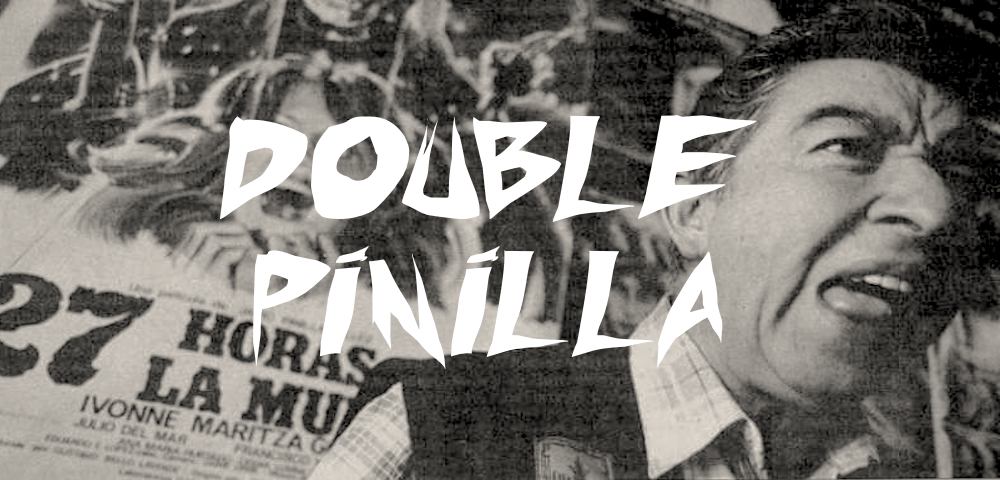
In keeping with our presentations of clásicos tropicales góticos by Luis Ospina and Ivan Cardoso, Spectacle is pleased to exhibit two Eighties rarities by living legend Jairo Pinilla, the so-called “Ed Wood of Colombia”. Also reigning from Cali (Ospina’s hometown, as well as the late Carlos Mayolo’s), Pinilla pioneered a form of acerbic camp cinema in constant struggle with Fono Cine, the government agency providing funding for some of his movies. While the films are well known among cineaste circles of Colombia, little is published in English about Jairo Pinilla. His most notorious works (like the temporary-death medical thriller 27 HORAS CON LA MUERTE, or AREA MALDITA – about a marijuana crops protected by a monstrous, weed-addicted python) remain sadly unavailable on these dark shores. We hope this series begins a bigger inquiry into Pinilla’s work which, despite its languorous pace and phantasmagoric theatrics, retains the innocence of the best zero-budget cinema of the macabre.
Last December Pinilla told The Miami Herald that ‘“You have to have a good ending first,” he said, taking a deep drag on a cigarette. “Then you start stacking all the other elements behind it like a funnel.”’ The funnels capping both THE GOLDEN TRIANGLE and EXTRAÑA REGRESIÓN must be seen to be believed – affirming Pinilla’s late night tales as low-key pulp masterpieces.
An ostensibly straightforward mystery thriller riffing on a bygone generation’s worth of toxic whispers about the Bermuda Triangle, this film (also released as LA ISLA FANTASMA) uses the Panama Canal Zone as a jumping-off point, from whence a young girl and her father vanish out on the high seas. Jack Mendelson, her swollen uncle (who may also be a mercenary/private detective?) decked out in a leather vest and ripped bell-bottom jeans, goes searching for them, with the remaining nephew in tow. Their axes form a puzzle, leading them to a moss-ensconced island housing a mythic miniature pyramid made of solid gold – but the triangle is treacherous, and exposure to it begins to cost Jack his sanity.
Well before a man-eating plant has taken center stage, you’ll agree that EL TRIANGULO DE ORO is one of the wildest and most imaginative horror movies ever made, including at least one set piece that should be legendarily famous: a showstopping martial arts throwdown between Jack and a cadre of shady characters in a seaside cantina. The bar patrons’ horrified reactions teeter between tragedy and farce, another example of Pinilla’s surprisingly un-rushed editing style: Pinilla builds mystery through gorgeous location photography, decking each scene out with more telephoto zooms than you’ll find in most contemporaneous Hollywood thrillers. Speaking of which: both films in this series betray Pinilla’s penchant for overlaying snatches of music from overhyped American movies of the day. An insaniack final twist (complete with flashing strobes and bedraggled first-person long takes tiptoeing through walls of ivy, reeking with death) adopts the perspective of a child, played by Pinilla’s real-life son Jorge, to dreamy, haunting and hilarious effect.
A beautiful medical student named Laura is orphaned in two fell strokes of awful fate: first her father dies, then her jeweler’s mother is murdered by her sociopathic cousin Rodolfo (alongside his equally free-spreeing sister, who soon uses her witness status as a cudgel against the culprit.) Laura becomes obsessed, both with seeking vengeance for her mother’s murder, and with the idea of reoccupying her still-fresh corpse – egged on by her compatriots, whose are only interested in modern medicine for the promise of a ramshackle bridge to the other side. Soon Laura has decided to be killed so her spirit can commingle with her mother’s, but her boyfriend Ray disapproves – and Rodolfo, by now moved into Laura’s empty family home with his deadbeat father, may have other designs.
Finding Colombian audiences disdainful of his Spanish-language movies, Pinilla sought to disguise EXTRAÑA REGRESIÓN as an American production, and thus dubbed it in English – giving a ludicrous innocence to the overdubbed line readings during on-campus discussions of science, morality and life after death. EXTRAÑA REGRESIÓN becomes a hypernatural revenge thriller in its final act, stacked with double-crosses and uncanny coincidences than a telenovela: a hyperintelligent baby is born to host Laura’s soul, tracking down both Rodolfo and her old boyfriend Ray (now played by Pinilla) for a reckoning from the other side – sure to haunt the hell out of Rodolfo, Ray, and perhaps also the captive audience.
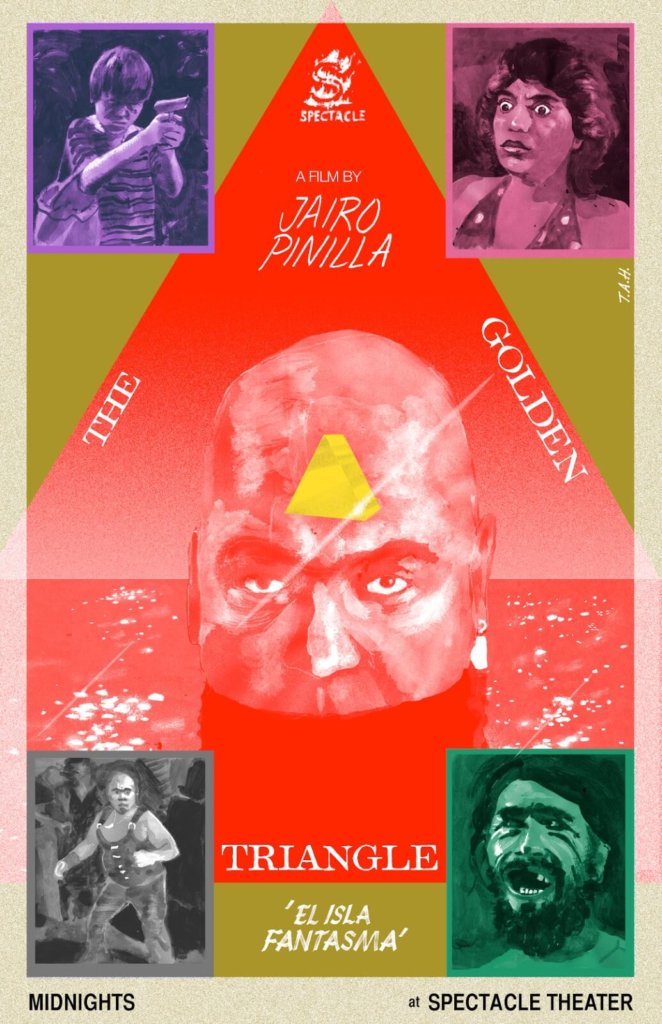
(poster by Tom Henry)
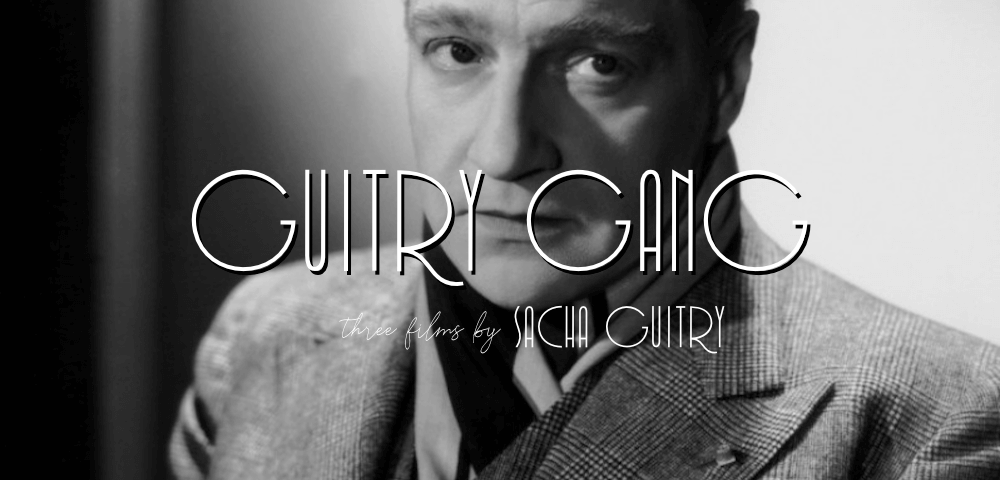
Prolific polymath Sacha Guitry, born in Russia in 1885 to a family of French showfolk, made his name on the stage as an arch playwright of uniquely Gallic light comedies. At home, Guitry’s wry observations on matters romantic, personal, and political have earned him a well-deserved reputation as a satirist of the highest order. And, like many of his fellow countrymen, his oscillation from stage to screen and back again resulted in a jam-packed body of work that freely blurred the distinctions between either medium. Director, writer, and often star, Guitry’s well-trained ear for conversation is unparalleled, and his apparent gift for eliciting fine performances ought to be an example to working filmmakers the world over.
Stateside, in a firmament populated with Renoirs and Clairs, Guitry’s cinematic and theatrical oeuvres remain relatively unknown. These three films, all from 1936, comprise little more than half of his cinematic output for that year – in addition to the titles presented here, Guitry also counted another two feature films and five plays within that brief span. At his height, he was by all accounts France’s foremost theatrical belletrist, but by decade’s end, goose stepping would reverberate across the Champs-Elysée and the output of this once-avid triple threat would slow to a crawl. Although the sparkling days of Guitry’s pre-War Paris are but a distant memory, we can still cherish this trio of fripperies and the rosy-cheeked, winking time they represent.
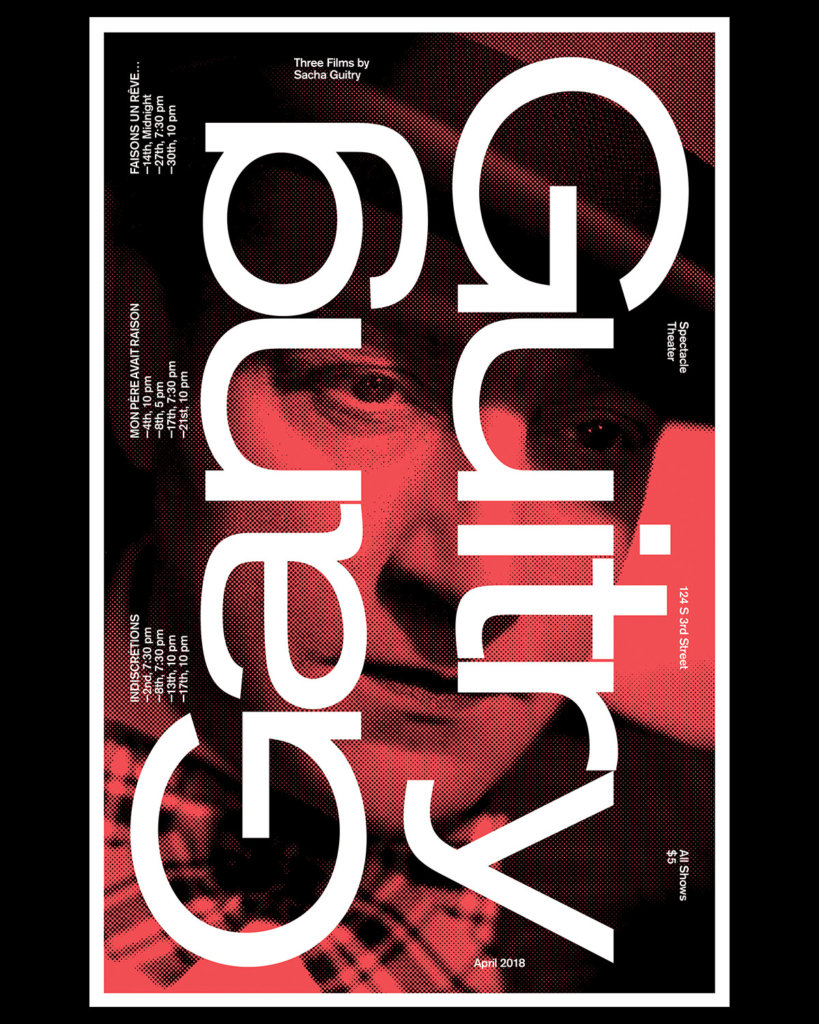

Guitry sets a trap – in this case, a Rube Goldberg of a dinner party with the express purpose of catching his aging wife in the arms of another man! It’s out with the old and in with the new at Chez Marceline, where Madame and Monsieur battle with rapier wit for the soul of their decades-long, childless marriage. Madame’s young conquest is soft, pliant, and eager to please, but it’s a newfound secretary – organized, hard-working and, above all, discreet – that provides the man of the house with his much-needed secret weapon. Between breaking in a new butler, keeping one jaundiced eye on his philandering wife, and preparing for dinner with a boring couple, Guitry’s white-haired, flustered protagonist performs a plate-spinning act that could sell out the Comédie Française.
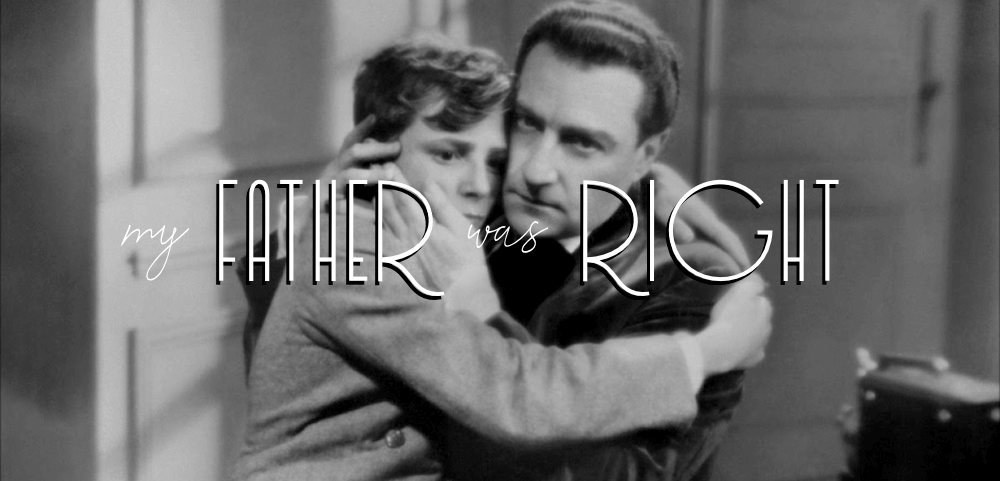
“Women are made for marriage, and men are made to be bachelors. That’s the trouble!” Writer-director Guitry stars as a cuckold in a stuffed shirt whose wounded pride predestines his son for a lifelong suspicion of the fairer sex. But the film’s rapid-fire dialogue and huffy moralizing are only a disguise: its true beating heart is in this sweet depiction of paternal devotion and filial tenderness, spread evenly across three generations of befuddled Frenchmen. Hilarity ensues, as it so often does, when their seemingly unflappable bond between is tested by womanhood in all its wily unpredictability.
Guitry’s rondéle of casual infidelity among the petit bourgeois has more elan than you can shake a cigar at – in fact, the old double-cross never looked so elegant than in this lighter-than-air account of a sneaking seducer and his married conquest. Conveyed with a sprightly visual grammar, lit by a twinkling of fun cameos – including Arletty and frequent Renoir star Michel Simon – Faisons rises ever upward like bubbles to the top of a champagne flute. A fine vintage, these ins and outs of les affairs secrets burst with light flavor – and leave a pleasant tingling in lieu of a calling card.
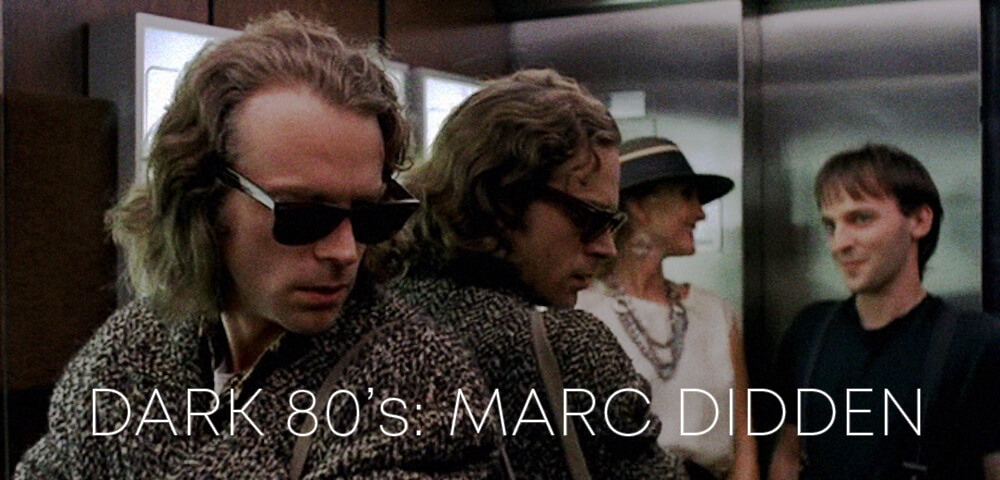
A distinct film mood inhabited Belgium in the 1980s, established by a small group of auteur filmmakers who drew from the same pool of actors and a shared theme of existential (masculine) ruin. Marc Didden, a rock critic who spent a lot of time talking to Frank Zappa and The Ramones, also created several murderer-portraits: BRUSSELS BY NIGHT and ISTANBUL. The engagement with neurosis and self-loathing saves these films from being a total glorification of the 20th century creep, but they also walk the line between transgressive and just, aggressive. Brad Dourif and François Beukelaers give powerful performances that generate disgust but also curiosity, where perversion and bigotry arguably hide a more essential grotesque. Cast in these films are Belgian director Dominique Deruddere (who made a biopic of Bukowski in ’89) and actress/director Ingrid de Vos. The fascination with murderers and predators seem here, as elsewhere, a way of probing more deeply into ambient urges and almost-uncontrollable fantasies.
Opening with a warm and familiar instrumental by Eric Andersen, this film presents itself as a road movie with the innocuous goal of getting to Istanbul to do “business”. It doesn’t take long for this drifter vessel to steer off course. The friendship that forms between a maniacal Martin (Brad Dourif) and his chosen pal – Willy (Dominique Deruddere) is rife with equal parts Stockholm syndrome and fascination. And Dourif is truly fascinating: a particular eccentric with a West Virginia drawl and the raw intensity of an artist or a psychopath.
The two hitch a ride with Joseph (Max in BRUSSELS BY NIGHT), a country car mechanic with designs to make the two ruffians into semi-professional kidnappers. Martin and Willy accept the gig and make off to Southern France to nap Joseph’s young daughter from her mother and new boyfriend. This task wrenchingly reveals Martin’s darker demons and the full picture of how he arrived in Belgium in the first place. Despite how fully this story goes off the rails, Didden doesn’t allow his two protagonists to fall into caricature: their complex and sometimes uncontrollable motivations plunge us into a weirder contemplation of human evil.

Max could have shot himself. Instead he takes his anxious terror out of the house, to the train station, and wanders the Brussels streets. He’s a detestable guy, a real class-A jerk, though able to convince others that he is wracked with psychological turmoil. To Didden’s credit, Max becomes a detailed study in pathological behavior, and perhaps a cultural gesture of the inevitable and demented decay of the (white) European man. The set design of Didden’s films are reminiscent of the 1950’s, and into these settings walk new monsters of the dark 80’s.
Alice (Ingrid de Vos), tries to apply some of the sentimental charm of the past to this new ugly reality, and we watch her character fail. The “heroes” have decided to show their true selves: abstract rage, emotional stiltedness, and a reliance on bigotry when they don’t get what they want. Alice is an empath who runs a bar like a full-service therapeutic clinic, and winds up in a strange dance between Max and Adbel (Amid Chakir). She doesn’t manage her feelings well, and she and Abdel lose out for allowing Max into their lives. Max manipulates both anti-Arab sentiment and classic male domination to bad ends, like a ruinous whirlwind twisting itself into oblivion.
 Marc Didden. photo credit: Geert de Taeye
Marc Didden. photo credit: Geert de Taeye

Amid the responsibility of taking care of her brother who is in a vegetative state, financial problems and the awakening of her sexuality, Florencia becomes obsessed with the comic “The Plants”, which is about the invasion of plant souls into human bodies during a full moon. Winner of two Berlinale prizes, Roberto Doveris’s debut reinvents the coming of age story with flourishes of comic book stylization and subtle embracement of thriller tropes. The result: a hallucinatory portrait of loneliness and a fearless depiction of female sexual desire.
Official Selection: Berlin, São Paulo
Snow covered mountains in Japan. Every night, a fisherman makes his way to the market in town. His 6 year old son is awoken by his departure and finds it impossible to fall back to sleep. In the sleeping household, the young boy draws a picture he then slips into his satchel. On his way to school, still drowsy, he strays off the path and wanders into the snow…
Official Selection: Venice, San Sebastián, São Paulo
MUBI is a curated online cinema, streaming hand-picked award-winning, classic, and cult films from around the globe. Every day, MUBI’s film experts present a new film and you have 30 days to watch it. Whether it’s an acclaimed masterpiece, a gem fresh from the world’s greatest film festivals, or a beloved classic, there are always 30 beautiful hand-picked films to discover.

The Borroloola Aboriginal Community is made up of four language groups from the gulf region of the Northern Territory. The people live within a tribal structure and all decisions concerning this film were made within this structure.
The opening words of TWO LAWS are spoken by Leo Finlay, a prominent member of the Borroloola community:
“I suppose you know these two, Alexander and Caroline. Last year was in Sydney and asked them to come down to make film in Borroloola for our own people. They’re here in Borroloola now and we’re glad that they came to make this film. They been apply to the government to get some money to make this film which was real good. So its our film and we’re going to make really good film out of it.”
TWO LAWS is not a conventional documentary – it comes from a different perspective, from Aboriginal community commitment, and in doing so it also challenges notions of filmmaking practice, of history, of ethnography, of objectivity.
The Aboriginal people of Borroloola have a traumatic history of massacres, institutionalisation and dispossession of their lands. Reflection upon this history is increasingly part of the Borroloola people’s basis for action and the consolidation and definition of aims. The request for this film to be made is part of this process.
The film is divided into four parts but although this arrangement is roughly chronological. TWO LAWS is not a straight linear narrative, nor are its four parts kept entirely distinct from one another: interconnections between past and present are dealt with through an investigation of both history and its construction, storytelling and its processes.
“The way Aboriginal people approach history is very different from the way we see history as located firmly in the past. People talk about history in the present tense, use the first person, employ dialogue, reenact events. In everyday life people tell stories that happened yesterday or happened one hundred years ago.” – Carolyn Strachan and Allesandro Cavadini
“TWO LAWS has scripted moments and re-enactments but is entirely transparent in its presentation; much of it is shot, wide-angle, from a seated position among a circle of people, in visual sync with Indigenous storytelling traditions. I haven’t seen anything like it in honesty of feel or form, though it’s an obvious precursor to the sleeker fictional drama TEN CANOES (Rolf de Heer, 2006).” – Lauren Carroll Harris, Realtime
“So substantial in achievement that it makes breathless praise undignified.” – Meaghan Morris, Financial Review
“No other documentary has come anything like as close to uncovering the richness and the everydayness of modern aboriginal life, without every romanticising it.” – John Hinde, ABC
“A breakthrough of major significance in ethnographic film.” – James Roy McBean, Film Quarterly
Special thanks to Facets Multimedia.
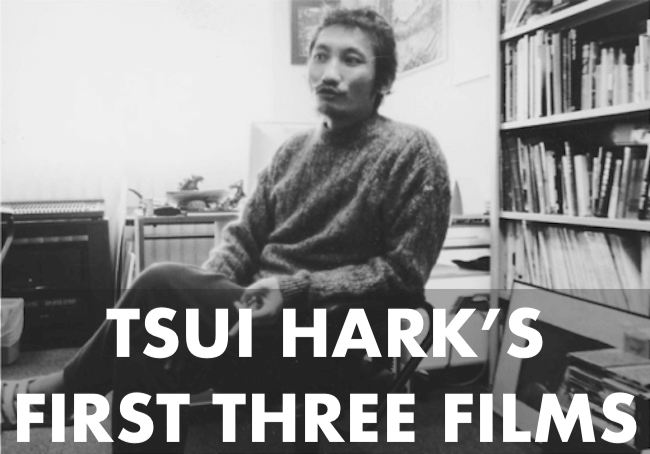
In the history of Hong Kong New Wave Cinema, Tsui Hark remains a sovereign figure, the forerunner of the first wave of political filmmakers who’d trained abroad during the 1970s. But following the box-office flop of his early, more experimental work, he shifted his style towards more commercial Kung Fu fare, a la John Woo. Some (this theater included) might have felt a teensy bit betrayed. This month, Spectacle Theater is proud to present a survey of Tsui Hark’s early new wave films, which culminates in a special presentation of his nihilistic 1980 avant-punk masterpiece, DANGEROUS ENCOUNTERS OF THE FIRST KIND.
Tsui Hark has directed, written, produced, and/or acted in more than 60 features, but his first three films showcased a young man raging against the mores of life in Hong Kong and the formal constraints put on its film establishment during the 1970s. The films are tightly controlled demolitions that hinge on chaotic set pieces that leave viewers breathless from their freedom from stylistic convention. He also bucked tradition in Hong Kong cinema by casting women in lead roles, and his subjects—urban decay, the 1967 Hong Kong riots,directionless anger of the youth,Hong Kong’s inability to defend itself from America’s cultural and economic domination—are just as pertinent to the world today as they were 40 years ago.
The series’ ace in the hole is DANGEROUS ENCOUNTERS OF THE FIRST KIND, a completely unique entry in the history of punk cinema. Kinetic and hyper violent, the film is a deeply cynical portrait of life in Hong Kong, with much of Hark’s signature anger and energy reserved for the audience itself. The film, which follows bomb-throwing disaffected youth as they attempt to smash Hong Kong’s sick culture, proved controversial enough to warrant censorship by the British colonial authorities, and Hark got burned out.
His first three films remain a fascinating document of a new talent emerging with a set of aesthetic and moral criteria intact, an angry voice fighting against the apathy of a sick society.
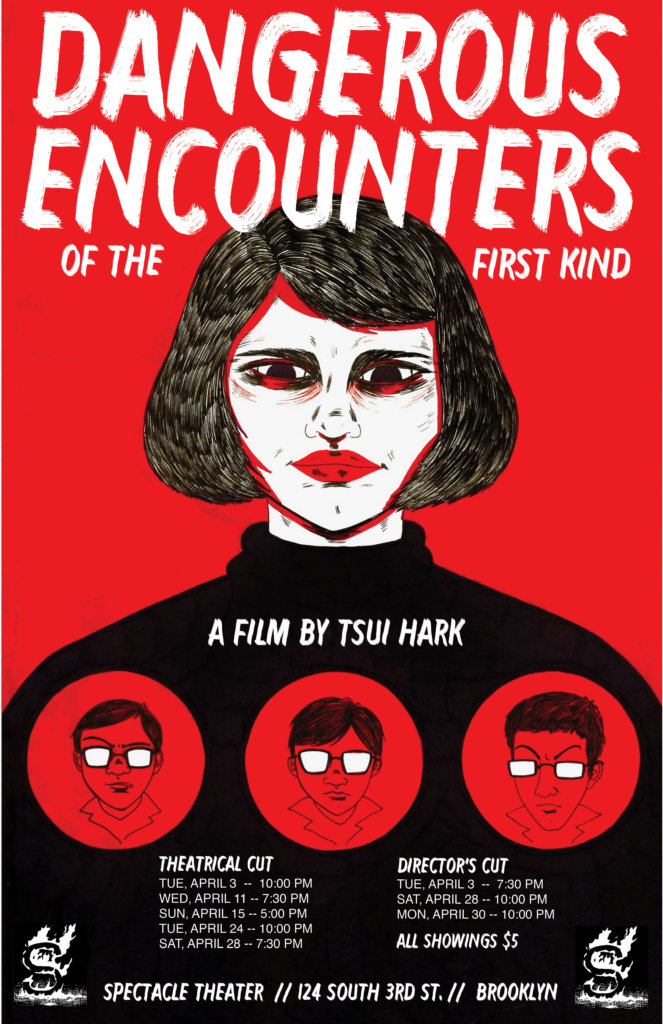
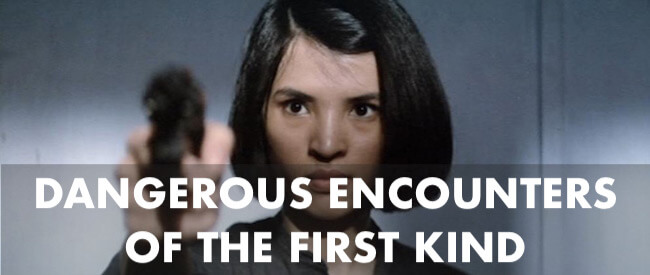
“In article three of the 1956 law dealing with dangerous objects, explosives are classified as ‘dangerous objects of the first kind.’ People possessing such objects are called… DANGEROUS ENCOUNTERS OF THE FIRST KIND!’”
Perhaps the grimmest and most nihilistic portrait of Hong Kong society to emerge from the first HK New Wave movement, Tsui Hark’s socio-economic avant-punk action masterpiece is like no film you will ever see again. Banned by the British colonial government immediately upon its release and forced into a state-mandated re-edit, the film has become a cult classic, and an important entry in the history of “delinquent youth” cinema. Spectacle is proud to present this rebellious, corrosive film in its original form.
Close-up on a cage of mice on a desk in a gritty tenement: A radio blares the obscenities that pass for news in late-70s Hong Kong: violence, natural disasters, dead children. A hand reaches from the darkness to snatch a white mouse, and proceeds to bore a nail into its brain before returning it to the cage, where it is devoured by it’s brothers and sisters.
This is the opening sequence of Dangerous Encounters of the First Kind, Tsui Hark’s most stunning contribution to the lineage of nihilist cinema. The setting is bleak: Hong Kong is portrayed as a living apocalypse of corruption and violence. Disaffected teenagers throw bombs for sport, violence is everywhere, colonialist American interests poison the population, and every citizen is trapped in a money-driven society hurtling itself towards auto-annihilation. The story follows a tight-knit cell of teenagers as they attempt to wreak havoc on a sick society—if they can avoid offing each other for long enough to do it.
Hark’s inventive camerawork ranges from shaky and handheld in some of the more fiery action sequences to fluid, elegant, and kinetic tracking shots through Hong Kong’s urban wasteland. Set to unauthorized usage of Goblin’s DAWN OF THE DEAD soundtrack, and capped by a gripping performance from Lin Chung-chi as a icily sociopathic teenage girl, this ultra-violent new wave masterpiece is anger and ugliness made manifest on the screen, and, according to film critic Law Kar, “probably the most nihilistic film ever made… one of those very rare films in the history of Hong Kong cinema that brims with accusations and subversion, and whose use of violence has a special significance.”
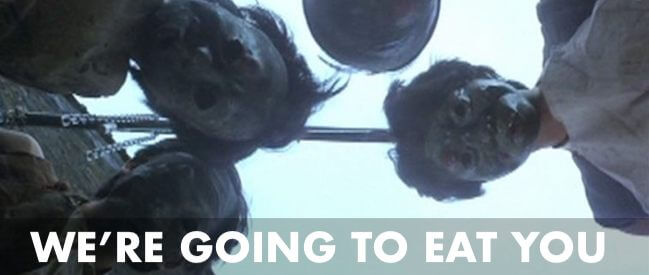
A grim fantasy about Mainland China, Hark’s second directorial effort took the form of a sort of Hong Kong New Wave version of THE TEXAS CHAIN SAW MASSACRE. While on the surface, the film is much simpler than Hark’s densely plotted debut, it dips into multiple genres while working as a steely anti-communist allegory that probes the relationship between Hong Kong and China.
The films follows Secret Agent 999 of the “Central Surveillance Agency,” as he pursues a mysterious thief named “Rolex.” The hunt leads him into a cannibalistic village, where residents subsist on visitors they capture and cook. The film is part horror, part Kung Fu, and part slapstick comedy, and Tsui’s most overtly anti-communist film (although it treats religion, intellectuals, and bourgeois romanticism with equal satirical acridity).
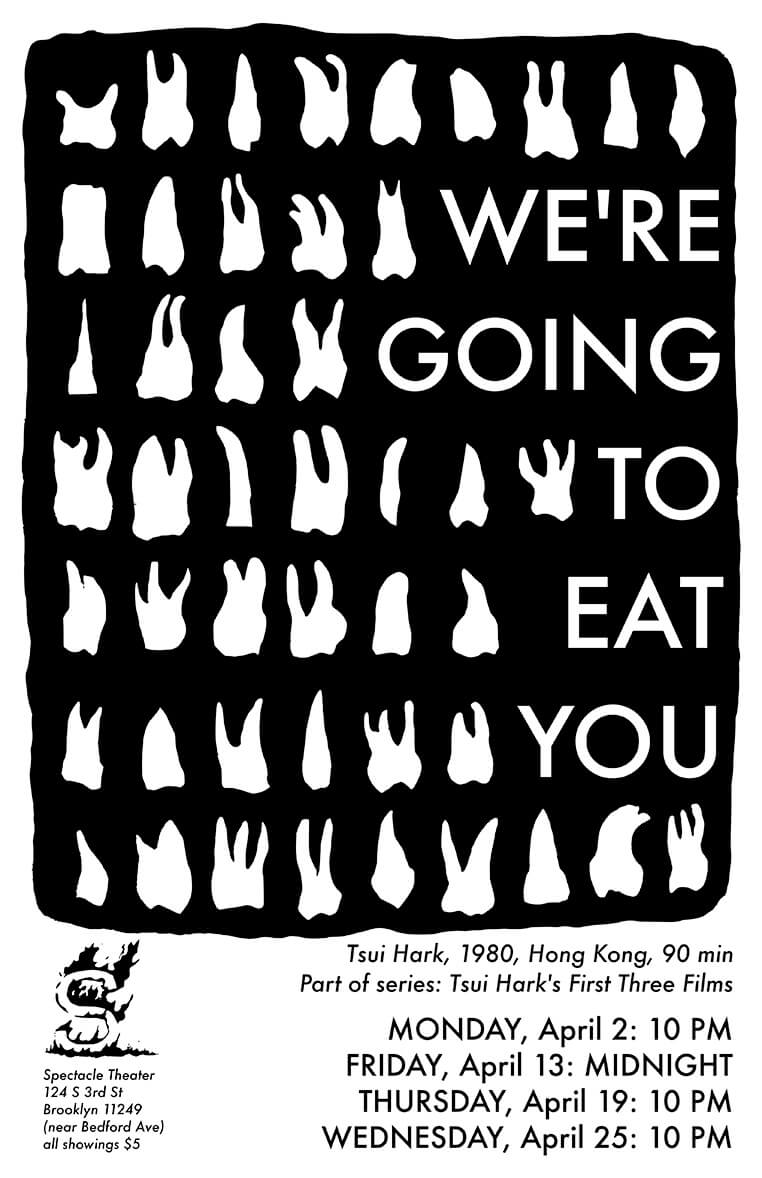
Hark’s directorial debut came in the form of this Wuxia, or martial arts epic, deeply inspired by Euro-American horror films and Spaghetti Westerns from the 1970s, a traditional swordplay adventure restructured as a murder mystery and inflected with bio-horror elements pulled from THE BIRDS.
On the strength of Hark’s success in the HK television industry, he was hired to direct his first feature in 1979, and immediately imprinted his signature style onto the screen. The story tells the legend of the noble Shum family, who was beset by clouds of murderous butterflies. Quick cuts, shock edits, and layered sound buoy the atmospherics of his gorgeously shot sequences, and while it is clearly a debut production, Hark provides a preview of the high-flying, wire-enhanced acrobatics that would dominate his later period fantasies.
When Dangerous Encounters of the First Kind was originally submitted to British colonial censors, concerns were immediately raised in regards to the film’s anti-American sentiment, a certain sympathy with the sociopathic teenager leads, and a handful of smash cuts to photographs of Hong Kong’s 1967 anti-colonial riot. The film was banned, re-edited, and released in an incomplete form. For these specials screenings, Spectacle is proud to present the film as close to it’s original form as is possible. (Please note censored sequences are pulled from a heavily damaged archival source, and do not match the quality of the theatrical release.)

TUESDAY, MARCH 20th
ONE NIGHT ONLY – 7:30 PM
Join Match Cuts and Spectacle Theater for two works by Coco Fusco.
POCHONOVELA: A CHICANO SOAP OPERA
dir. Coco Fusco, 1996.
USA, 27 min.
English.
POCHONOVELA is a bilingual, bicultural blend of Latin America’s and the United States’ most popular television genres—the telenovela and the sitcom, respectively. The humor and madness of life in East Los Angeles are captured here in performances by members of the Los Angeles-based comedy troupe, Chicano Secret Service, and other U.S. Latino actors. This provocative comedy touches on political, social, cultural, linguistic, and family issues attendent to the cross cultural life of Mexican Americans living near or on the border—both psychologically and geographically. Music composed by the band Cholita.
THE COUPLE IN THE CAGE: GUATIANAUI ODYSSEY
dir. Coco Fusco, Paula Heredia, 1993.
USA, 31 min.
English.
In a series of 1992 performances, Coco Fusco and performance co-creator Guillermo Gómez-Peña decked themselves out in primitive costumes and appeared before the public as “undiscovered AmerIndians” locked in a golden cage—an exercise in faux anthropology based on racist images of natives. Presented eight times in four different countries, these simple performances evoked various responses, the most startling being the huge numbers of people who didn’t find the idea of “natives” locked in a cage objectionable. This provocative video, directed and produced by Coco Fusco and Paula Heredia, suggests that the “primitive” is nothing more than a construction of the West and uses comic fiction to address historical truths and tragedies.
Text courtesy of Video Data Bank
COCO FUSCO is an interdisciplinary artist and writer and the Andrew Banks Endowed Professor of Art at the University of Florida. She is a recipient of a 2014 Cintas Fellowship, a 2013 Guggenheim Fellowship, a 2013 Absolut Art Writing Award, a 2013 Fulbright Fellowship, a 2012 US Artists Fellowship and a 2003 Herb Alpert Award in the Arts. Fusco’s performances and videos have been presented in the 56th Venice Biennale, two Whitney Biennials (2008 and 1993), BAM’s Next Wave Festival, the Sydney Biennale, The Johannesburg Biennial, The Kwangju Biennale, The Shanghai Biennale, InSite O5, Mercosul, Transmediale, The London International Theatre Festival, VideoBrasil and Performa05. Her works have also been shown at the Tate Liverpool, The Museum of Modern Art, The Walker Art Center and the Museum of Contemporary Art in Barcelona. She is represented by Alexander Gray Associates in New York.
MATCH CUTS is a weekly podcast centered on video, film and the moving image. Match Cuts Presents is dedicated to presenting de-colonialized cinema, LGBTQI films, Marxist diatribes, video art, dance films, sex films, and activist documentaries with a rotating cast of presenters from all spectrums of the performing and plastic arts and surrounding humanities. Match Cuts is hosted by Nick Faust and Kachine Moore.
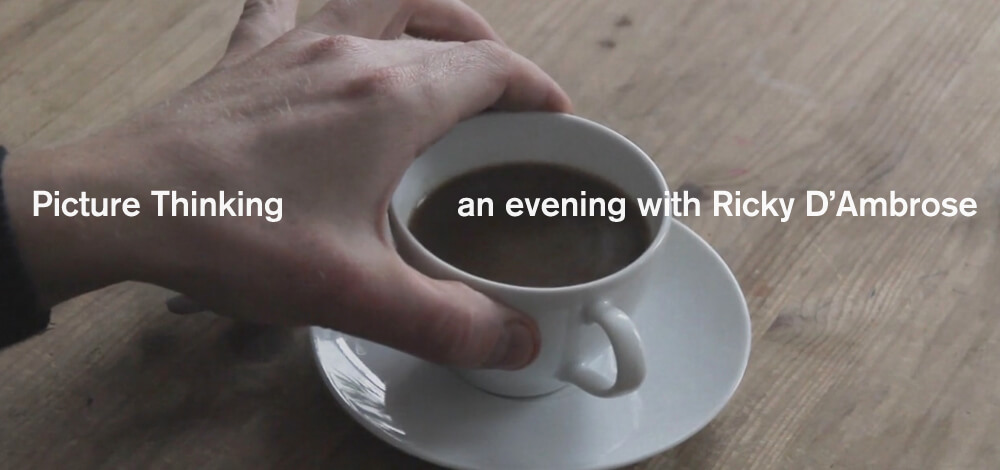
WEDNESDAY, APRIL 4 – 7:30 PM
ONE NIGHT ONLY!
In advance of his feature debut NOTES ON AN APPEARANCE playing New Directors New Films, Spectacle is thrilled to host filmmaker and critic Ricky D’Ambrose for a special screening of his early works followed by a Q&A.
These four short films—draft variations on a theme or two, made between 2011 and 2016—anticipate NOTES ON AN APPEARANCE. (Ricky’s earliest, THE STRANGER, has never been shown publicly before!)
“D’Ambrose suggests that he’s searching for a way to make films that break with the dominant mode of independent filmmaking. In order to construct his own cinematic future—and the era’s—he’s trying to reconstruct its past.” – The New Yorker
“SIX CENTS IN THE POCKET is framed around Clyde’s errand for a woman named Risa. The less you know about what happens in the next 14 minutes, the better. Suffice to say, this seemingly low-budget Brooklyn chamber drama, is actually more like a classic city symphony from the 1920s. What to call it: Arch-minimalism? Sensational Bressonianism?” – BOMB
THE STRANGER
2011. 32 minutes.
An anonymous young man appears in the apartment of a young couple, promising the two graduate students a better, less insular life with him in Berlin. Attracted to what they consider the man’s political and artistic preoccupations, the couple withdraws from school, quits their jobs, destroys their belongings, and waits impatiently for the return of the stranger, who never returns.
PILGRIMS
2013. 14 minutes.
In a city afflicted by increasingly violent protests, a dying young man is visited in his apartment by a refugee, a political radical, and a priest.
SIX CENTS IN THE POCKET
2015. 14 minutes.
A young man with a small, diminishing supply of money drifts in and out of the New York apartment of a couple traveling overseas.
SPIRAL JETTY
2017. 16 minutes.
An applauded New York intellectual hires a young archivist to whitewash her late psychologist father’s reputation by eliminating a forbidding, potentially incriminating paper trail.
Total runtime approximately 76 minutes.
Ricky D’Ambrose was born in Livingston, New Jersey, United States in 1987. He studied English Literature and Cinema Studies. Since 2013, he has shot and edited a series of video-recorded directors’ talks for the online film magazine MUBI Notebook, and written film reviews and essays. Following these shorts, NOTES ON AN APPEARANCE is his first feature film.